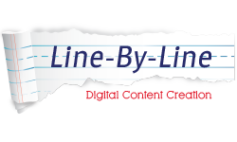We create all types of content as part of our normal workday. We write emails, create proposals, write blog posts or maybe even update our business website.
Creating content is a crucial first step, but making sure that content is creating value is just as important.
If what we write doesn’t resonate with our readers, they aren’t going to continue reading, they aren’t going to learn more about our business, and they aren’t going to be a potential customer.
So how do we create content that engages with our customers and sells?
If it sounds complicated or overwhelming, it doesn’t have to be. Regardless of what you are writing, there are seven steps you can follow that will guide you to creating valuable content that engages your reader and increases your sales.
Step #1: Know Your Audience.
Your target market will be different depending on what you are writing, so you’ll want to make sure you are writing for the intended audience. Ask yourself questions about your audience. How old are they? What is there education level? Where do they live? Are they primarily male or female? Create a picture in your mind of one person who has all of the attributes of your target audience, and write directly for him or her. If you can do that, your writing will be more effective and personal.
Step #2: Find Your Voice.
Your writing voice is how you “sound” when you write. It’s your point of view, your attitude, and your personality that comes through when you write. You’ll want to choose a writing voice that is appropriate for your business. If you are a banker or financial planner, your voice will be knowledgeable, informative and trustworthy. If you are a funeral director or work for hospice, your voice will be sympathetic, comforting and reassuring.
Step #3: Write a Catchy, Attention Getting Headline.
Your headline is important because it helps your audience decide if they will keep on reading. It piques their interest, invites them in, and poses a question they want the answer to now. It should be short, direct, descriptive and enticing.
Step #4: Make Your Content Readable.
Most readers want to get their information fast, and will initially scan content instead of reading word for word. Therefore, you want your content to be easy to scan. Use short sentences, short paragraphs, lots of white space, and bulleted or numbered lists. Photos, images, inline links and subheadings all help the content flow smoothly and make your content easy to read.
Step #5: Build Trust.
Bob Burg said, “All things being equal, people do business with and refer business to, those people they know, like and trust.” You can build trust with your potential customers by providing valuable content, responding to comments and providing testimonials. Do what you say you will do, and be there for the long haul.
Step #6: Have a call to action.
A call to action is a statement or invitation that accompanies your content – usually at the end – that asks your reader to do something. It helps develop a relationship with your audience, and is the first step in the sales cycle. Calls to action can ask your audience to sign up for your blog, opt in to your email list or comment on your article. Other examples of calls to action are to follow you on social media, visit your website, or download a white paper or ebook.
Step #7: Be consistent.
Consistency takes discipline, commitment and organization. It’s not always convenient or easy. But it shows you are reliable, dependable and trustworthy. By being consistent, you are allowing your audience to know you, potentially like and trust you.
Follow these seven steps the next time you are struggling to create content for your business. By breaking the process down into manageable components, you can identify your goal, organize your writing, and create engaging copy for your potential customers.
If you’d like more information about how to create engaging content for business, please contact me or join my email list below.

